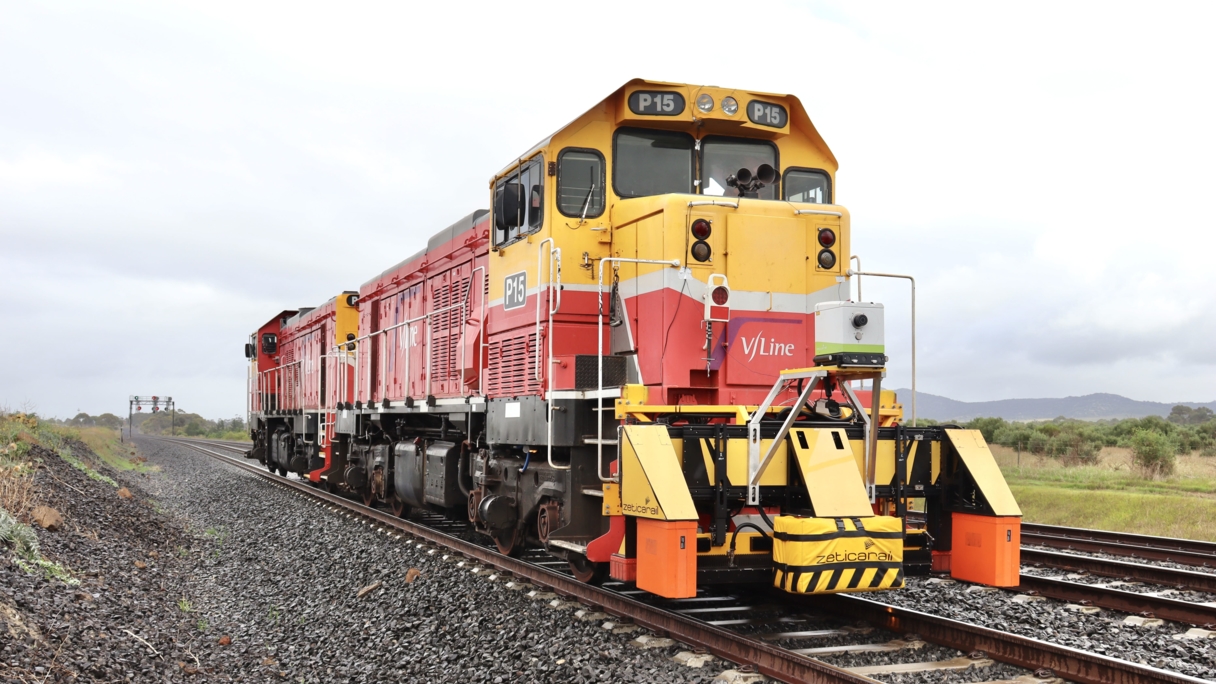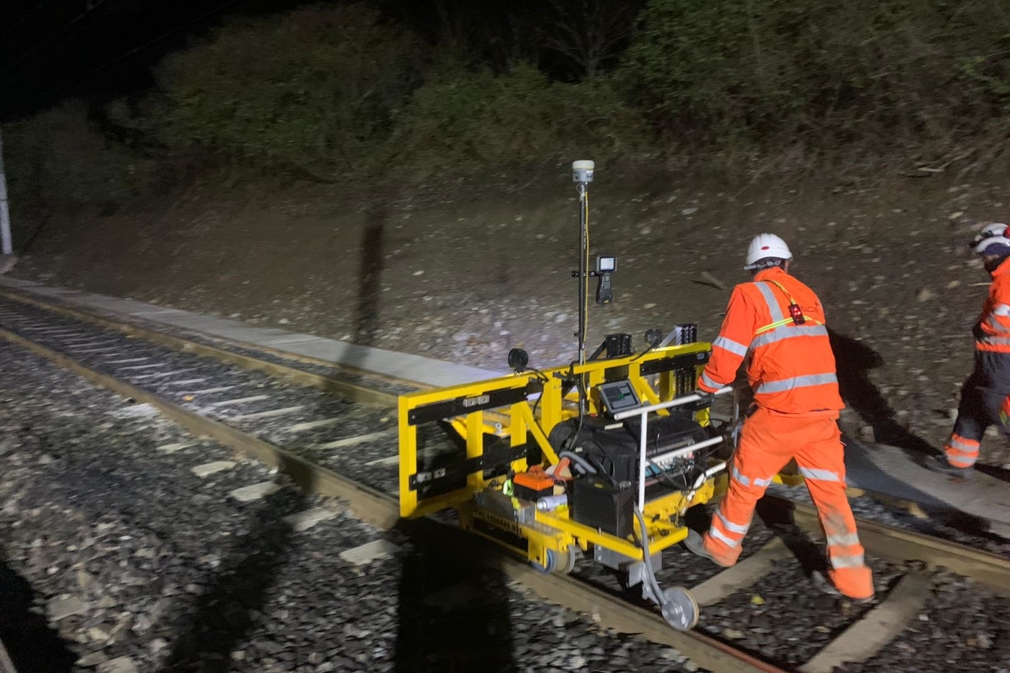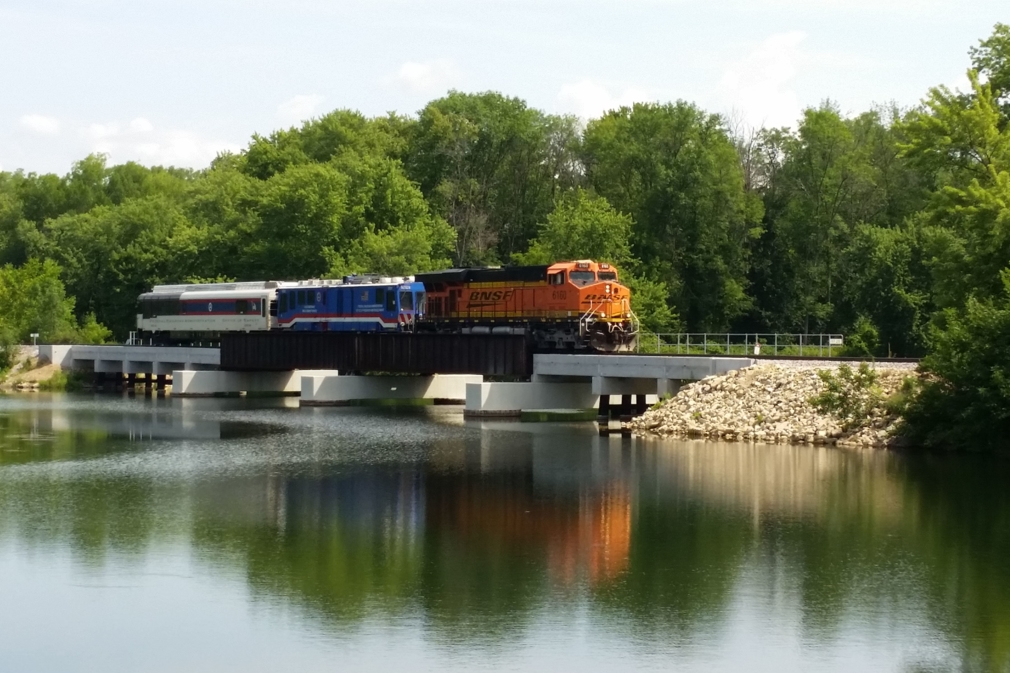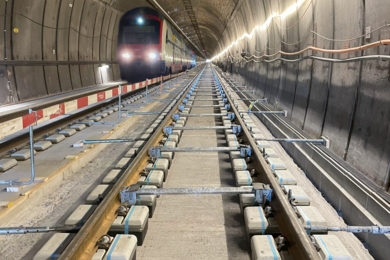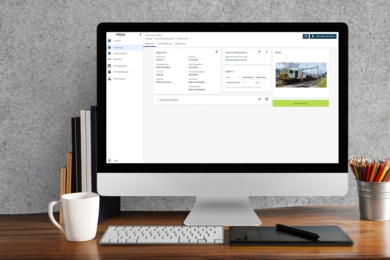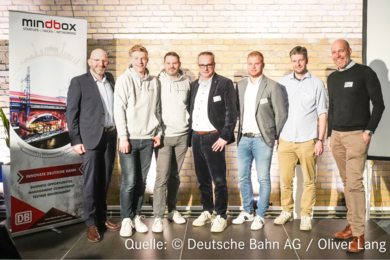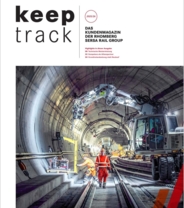Tens of thousands of kilometres of track set to be surveyed autonomously.
Rhomberg Sersa is developing a ground penetrating radar (GPR) system which will operate and gather data autonomously.
The team in North America has been carrying out GPR surveys since 2008 and currently collects around 100,000 miles worth of data annually.
This data has multiple uses, including planning where ballast cleaning will take place. The data is also used by the regulator, the Federal Railroad Administration (FRA), to send out safety alerts about sections of the track which could potentially be unsafe.
Now Rhomberg Sersa – in conjunction with its partner Zetica Rail – has launched the first step of what will be a totally autonomous GPR system. When fully operational, the system will gather and process data from tens of thousands of miles of track each year.
“We are currently building the system for Canadian National Railways,” said Pete Goff, Operations Manager-Technical, with Rhomberg Sersa in North America.
“Ultimately, we will have an inspection system that we can independently power up and run autonomously and send track condition-based metrics and safety reports to designated personnel for verification / action. The system is also designed to interact with other onboard inspection systems such as track geometry, vision, vertical track interaction etc. When any of these systems identify an issue that exceeds predefined safety and quality limits, a ‘trigger’ is sent, and a report is generated at each location to provide a comprehensive report on the track condition. This provides a defect and root cause assessment.”
The ‘trigger’ can also be preset to look for changes at locations where repeat issues occur or to inspect and look for changes in conditions.
Commissioning and live testing of the system was completed this summer. In the first year the system will inspect tens of thousands of miles of track and provide triggered safety reports. In addition, 2,000 miles of captured data will also be ‘back office’ processed to support maintenance planning and investment data. It will also help set a baseline across key track corridors that will allow reporting of change and degradation rates. In year two the number of miles processed will be expanded to 5,000 miles and by year three all reporting and system inspection functionality will be autonomous, and available to run 24hours a day.
“This kind of data is very valuable,” said Pete. “Some of our customers will only plan ballast work where they have GPR data.
“Right now, we collect more data than we process but we are processing more and more all the time.”
GPR is also being utilised by the team in Ireland after it won a competitive tender with its client, Iarnród Éireann - Irish Rail (IÉ) to carry out a GPR survey of the entire network.
The national survey is part of Iarnród Éireann’s continuing programme of maintenance works and their growing use of technology to drive improvements.
The GPR survey was carried out in late 2024 by Rhomberg Sersa in conjunction with Zetica.
This project has provided a detailed picture of the track structural condition and will assist the national rail provider in developing their future track maintenance requirements.
Zetica, the partner on both projects, is a global leader in the provision of trackbed condition measurement and asset mapping services to freight and public transport railroad companies.
